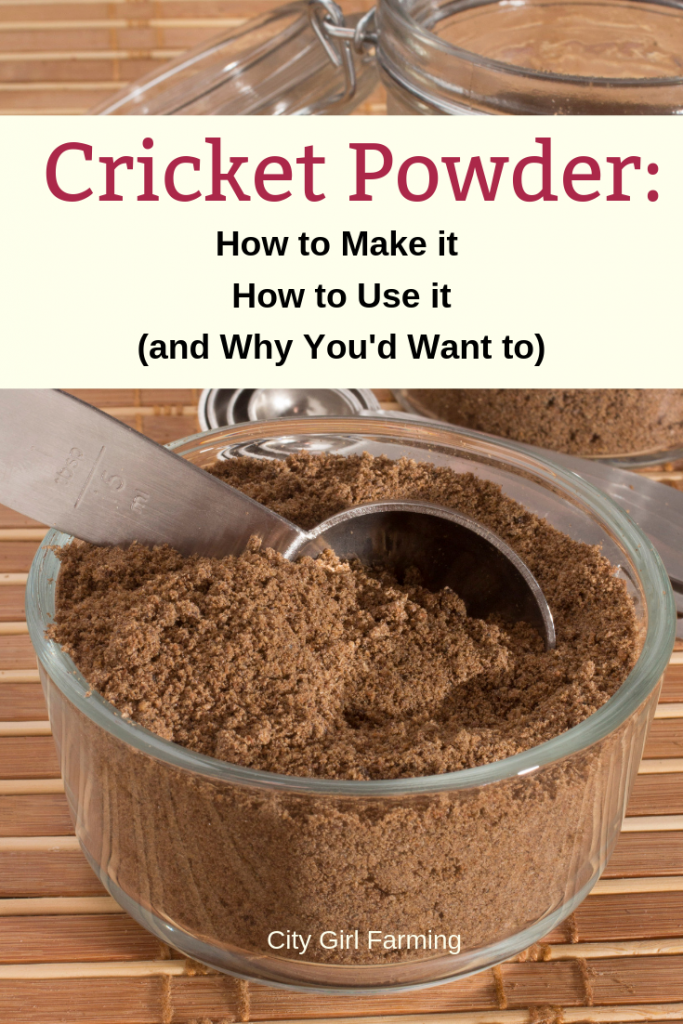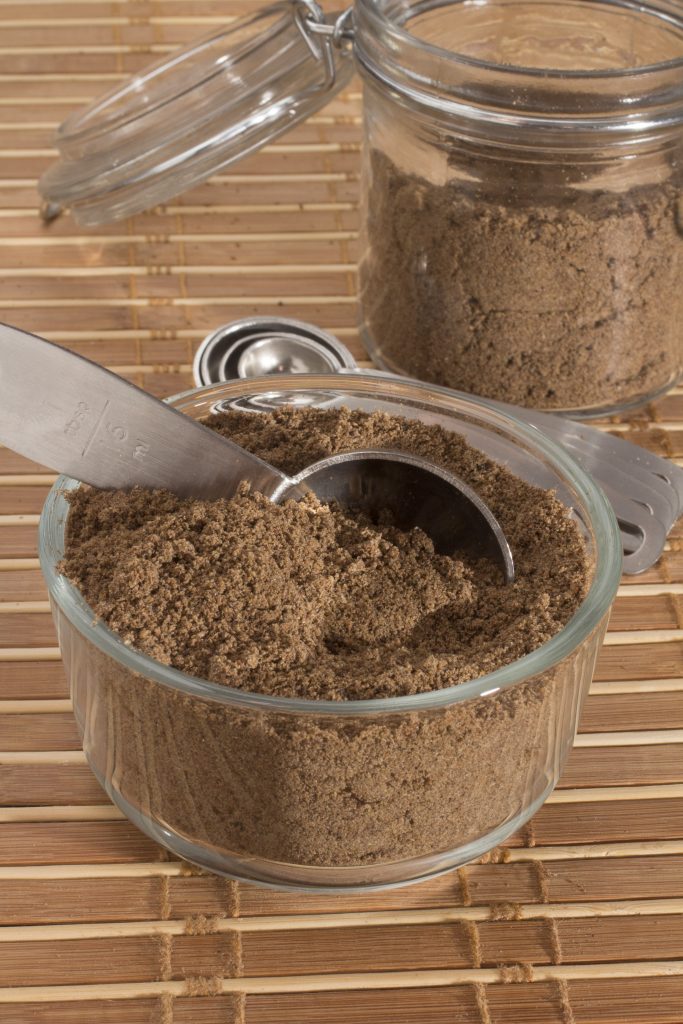By Sam Schipani
Nutritious and incredibly low impact, cricket powder has many merits. Learn how to grow your own crickets and use them for a great food source.

When you think of eating bugs, your first response may be revulsion, but people around the world have been consuming insects for generations. Farming these creepy crawlies may be the key to saving our planet while meeting the nutritional needs of a growing global population. Raising bugs uses far fewer land and water resources than livestock to produce the same amount of protein to feed our growing populations.
“They’re nutritious and they’re incredibly low impact,” said Robert Nathan Allen, president and founder of Little Herds, an edible bugs education non-profit based in Austin, Texas. “You can farm them and harvest them in a way that is more humane than our other livestock options.”

Crickets: Gateway Bugs
One of the best “gateway bugs” to incorporating edible insects into your diet is crickets. They are versatile, have a pleasant flavor and can be ground down into a powder and easily incorporated into a number of dishes without the common gross-out factor of eating a whole bug.
Plus, according to Stacie Goldin, community manager and manager of PR and education at the Canadian edible insect company Entomo Farms, the amount of water land and feed that is required to raise the crickets is far less than any other protein source, including soy.
“The health benefits are very vast. Cricket powder is very high in fiber, especially prebiotic fiber. It’s unbelievably high in B12,” Goldin said. “They have all nine essential amino acids and they’re high in calcium and omegas. It’s really just a super powerhouse when you consider the nutritional value as well as being low in calories and fat.”
Start a Cricket Farm
You can easily purchase cricket powder from a company like Entomo Farms, but you can also make it on your own. To start your own cricket farm, all you need is a container, like an aquarium with a tight-fitting cover or a high-sided Rubbermaid bin with a mesh top or a slick taped-lined rim to prevent the bugs from escaping.
“What’s great about growing [crickets] yourself is that they’re incredibly space efficient,” Allen said. “You can farm crickets in a bin in your closet, shed or garage.”
Fill the container with sand or vermiculite, which will serve as bedding for the bugs. Stack some cardboard egg cartons in the box so the crickets will have a place to hide. Keep a separate tray of topsoil on one side of the container for the eggs. Keep a sponge or wicking cloth in a shallow trough of water so the crickets can hydrate without drowning. Crickets require warm, humid environments — 85 degrees and 50 percent humidity is ideal — so set up the space where you keep your cricket farm with heat lamps and humidifiers.
Purchase cricket eggs or full-grown adults either online or from a pet store. Eggs should be kept in a separate container so hungry adults do not eat their young. After they hatch, adolescent crickets, should be kept in a separate, slightly more humid container with high-protein food like tofu or chicken until they resemble full-grown bugs. Adult crickets should grains, vegetables, and fruits, though Allen said to avoid citrus. Experimenting with their feed will influence the flavor of the bugs.
“If they are eating mint or basil or rosemary, they’re going to have a little bit inside of them still,” says Allen. “You can really influence the flavor of the insect from what you’re feeding it.”

How to Prepare Crickets
Once the crickets are fully grown in a few weeks, you can prepare them to eat. If you are feeling bold, you can roast or fry crickets and eat them whole. For many people who are new to eating bugs, though, it is much easier to prepare cricket powder, which is sometimes also called cricket flour, though it behaves much differently than the flour that you are used to.
“We literally roast them and grind them into a powder,” Goldin said. “It’s so versatile. That’s what makes it fun, as well as the fact that it actually tastes good.”
To make cricket powder, simply shake live crickets out of the egg cartons into a bag and put them in the freezer for a day or so before thawing and roasting them at 200 degrees for about an hour until the crickets are dry and crispy.
After roasting them, grind the crickets up in a food processor (or even a coffee grinder if you are only looking to use a little) until it is the texture that you want. Goldin said that some people prefer a coarse powder, while others like it very fine.
Once you have the powder you can easily incorporate it into your favorite food. Goldin said that she puts it in her family’s banana bread recipe for an extra nutritional boost.
“The powder is very easily incorporated into anything and everything, from a zucchini loaf to a vegetarian chili to a thick soup or salsa,” Goldin said. “It can easily be added in and the flavor profile is really not affected. The possibilities are endless.”
“Crickets taste like roasted nuts, which lends itself well to baked goods,” Allen added.
Goldin said that she prefers cooking with cricket powder — tossing a few tablespoons into a large bowl of her favorite lentil and rice soup, for example — but she also bakes her family banana bread recipe with a scoop or so of cricket powder. She said that a chef who works with Entomo Farms said that when baking, she recommends swapping out reducing the amount of flour in the recipe by the amount of cricket powder that you add.
“A lot of it is just experimentation. I’d say start small mix it in take a taste and add more,” Goldin said. “Just try it. Be open minded and look at the facts that are around it. Let your palette choose.”
Sam Schipani is a staff writer for Hello Homestead and the Bangor Daily News. She loves watching hummingbirds, eating flowers and shopping sustainably. She has previously written for Sierra, Smithsonian, Earth Island Journal and American Farm Publications.